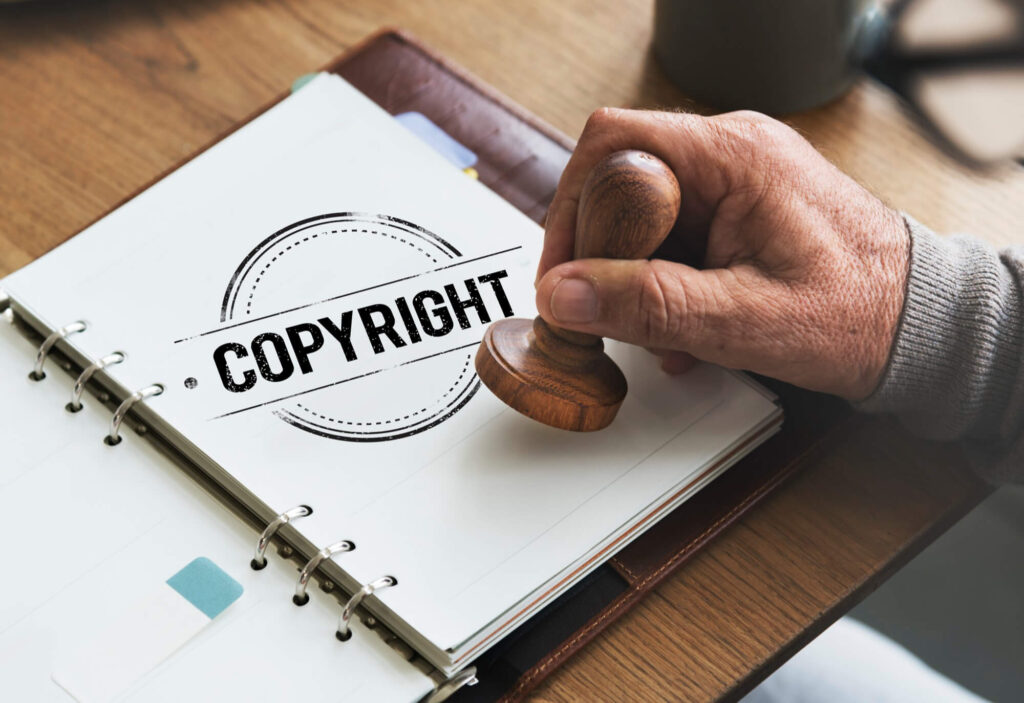When you’re done with the uphill task of finishing your book, you have to think about publishing it. But before you get to that, you need to learn how to secure your intellectual property from being reproduced without your permission. This is why you should ask yourself what should be included on a copyright page in a book. A very small paragraph serves as a warning to all those pirates who would reproduce or redistribute your work without giving you any credit. And you surely lose a lot of bucks if that happens.
A copyright page is the legal ownership announcement and provides more valuable information about the book’s publication, history, and rights. But what is a copyright page? How to make an effective and impactful copyright page for your publication and the book? What are the detail and things you should include in it? No worries, in this blog, we’ll talk about the importance of the copyright page and discuss the various elements you should consider including.
What Is A Copyright Page?
A copyright page generally appears on the backside of the title page. It may list the publisher’s name and address, the book’s ISBN, and any relevant copyright or trademark notices. Some authors also include a dedication, acknowledgments, or a disclaimer, which is a subject for another blog.
Must-Haves For Your Copyright Page In A Book

You can easily find out the variety of copyright formats available online. But no one would give you an ideal example or idea to help you create an impactful and professional copyright page. Therefore, we have created a list to assist you with a professionally crafted copyright page for all your publications.
Following are the elements/sections that a copyright page must have.
- Copyright notice
- ISBN
- Rights and permissions
- Disclaimer
- Edition information
- Design, production, editing, and illustration credits
- Publisher’s address
- Ordering information
- Trademark notices
- Author’s website (if any)
- Country in which the book was printed
- Environmental notices
1. Copyright Notice
This is one of the fundamental elements of a professional copyright page. A copyright notice includes:
- The copyright symbol (©) or the word “copyright.”
- The year of the first copyright
- The copyright holder’s name or identifier
An effective copyright notice can be written as:
© 2019 Jorge Duncan or Copyright 2019 Jorge Duncan.
You’ve probably seen copyright listings with many years, which describe the publishing year of different editions © 2015, 2017, 2019 Jorge Duncan.
However, if you’re using an alias, you can write it on your copyright page, but ensure that it has your real name and alias when registering the work with the US Copyright Office.
2. Include The ISBN
ISBN stands for International Standard Book Number, having a 13-digit numeric identifier that can be utilized by every bookstore worldwide. This can also be helpful while selling your books online.
3. Rights And Permissions
After adding a copyright notice, there is no essential need for a rights and permission section. But this can come in handy if you want to specify the limits of your publication usage. This may identify “fair use,” meaning people can reprint this, post it online, or use it to cite passages. There are many ways to write this section, such as:
All rights reserved by authors,
or
You can also add a tailored paragraph according to the permissions you want to allow to your readers, as this all depends on you. Don’t forget to include your contact info.
4. Disclaimer
Disclaimer can help you protect yourself from the lawsuit if your work resembles real-life characters. You can easily write your disclaimer in the following way:
“Any resemblance to a real-life event, or individuals (living or dead) is completely coincidental.”
5. Edition Information
You may also add your edition information to the copyright page. You can list this by adding a simple line of text to explain the number of editions, such as 1st edition, 2nd edition, or 3rd edition. However, this can also be listed as the first edition, second edition, or third edition.
6. Design, Production, Editing, and Illustration Credits
It is good to give credit to all the individuals who helped you during the publication process. For instance, designing, production, editing, or illustration credits. However, it is optional and up to you to add all of these to your copyright page or in the acknowledgment section.
7. Publisher’s Address
If traditional publishers are publishing your book, it is crucial to include the name and address (It might be just the city) and website URL. If you are a self-publisher, you may include your name, with address and URL, if you want.
8. Ordering Information
Suppose you have got your book published by a well-known publisher. In that case, the copyright page may also include ordering information as well as other details necessary to purchase the book.
9. Trademark Notices
Trademark notices are the logo and name of your publisher. You may add this to your copyright page as it will help you represent your book as a brand or creditable source.
10. Author’s Website (if any)
Embedding the author’s website URL on the copyright page can be a good idea and help you establish yourself as a brand.
11. Country In Which The Book Was Printed
You should add the country in which your book was printed to the copyright page, such as “printed in Australia.” However, if your book is printed in the USA, there is no need to highlight it, though not including it indicates that it was printed in the US.
12. Environmental Notices
You can also include different statements to showcase that your book was printed in an environment-friendly manner (e.g., Printed on SFI or FSC Certified Paper).
Create A Pro Copyright Page For Your Publication

Some copyright pages are as simple and clear, with only copyright ownership and year details, as this might be enough if your book is published by a well-known publisher. But if you are a self-publisher, you must add all the above mentioned elements. However, if you struggle to create a copyright page in a book, you may contact us. We are a one-stop solution for all your book publishing needs that can help you, from writing an engaging narrative to publishing a successful book. For more details, contact us.

